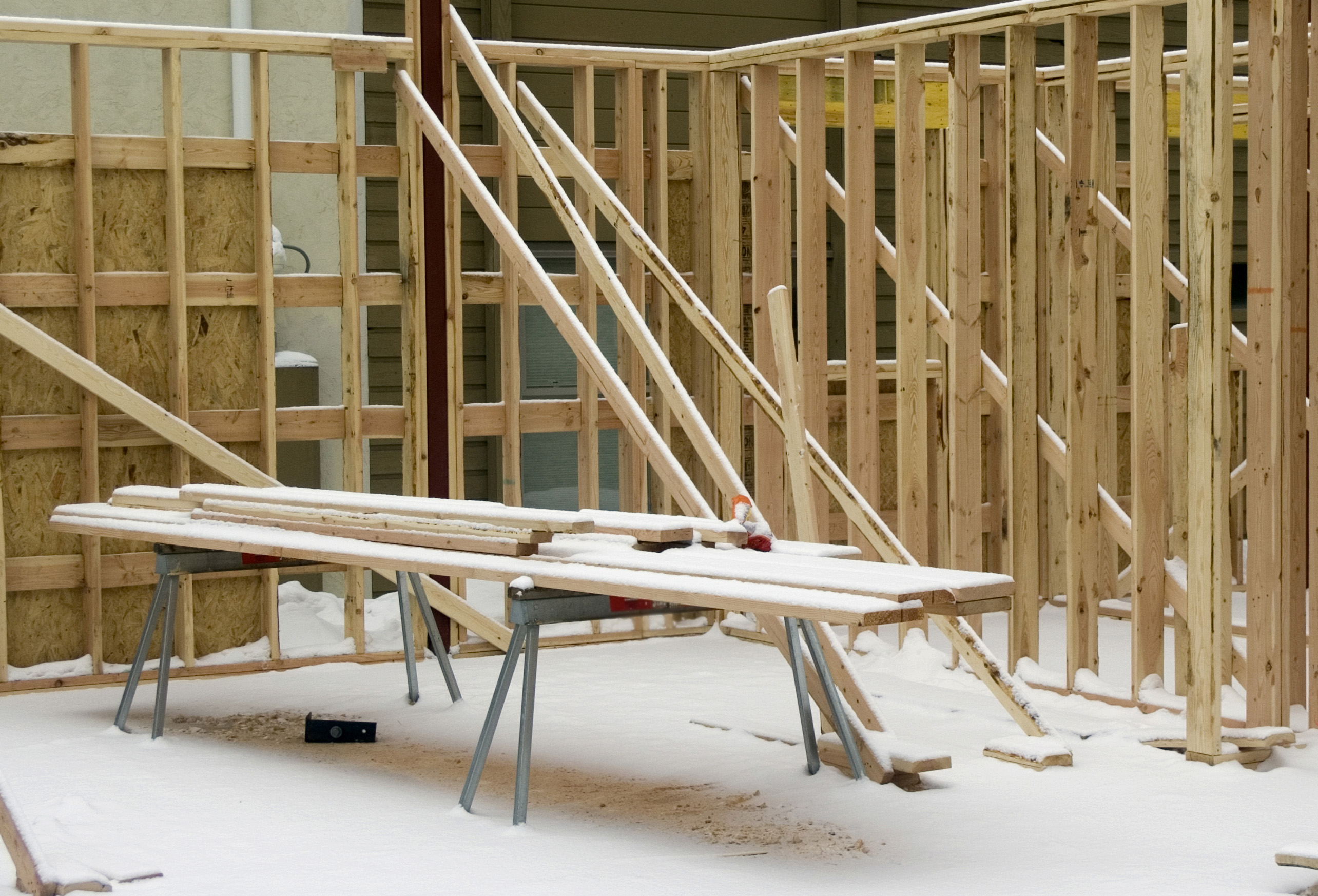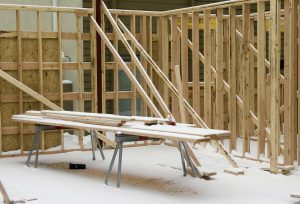
Winter has arrived and with it snow and ice which make surfaces more treacherous and cold hands and feet which make workers less stable. It falls to construction jobsite managers to ensure that all workers are following safety protocols to reduce the risk of injury.
workers are following safety protocols to reduce the risk of injury.
Start every day with an inspection of the site to check that all snow and ice has been removed from surfaces where workers will be passing through or working. Salt areas where possible and continue to inspect the site throughout the day to ensure that ice has not built up on ladder rungs, scaffolding, steps, walkways etc.
Remove icicles that can pose a hazard or rope off areas under icicles if they can’t be removed.
Inspect all heaters and train employees on the safe use of heaters and generators. Keep combustible materials away from heaters and confirm that the home is adequately ventilated.
While the completed structure will be engineered to withstand the weight of snow, this may not be true during various stages of construction. If you have received a heavy or unexpected snowfall, speak with your designers to check that the unfinished structure is able to handle the extra weight of the snow, especially if rain was involved, without posing a danger to workers.
The same goes for scaffolding; inspect your scaffolding structures every day and ensure that they are able to withstand the added weight of snow.
Frostbite is also an issue in colder climates and managers should make sure that all workers are properly clothed to deal with plummeting temperatures.
Roofs are particularly dangerous and slippery when wet, when they have frost on or are covered in snow. Add to that a strong winter wind and your jobsite holds a wealth of safety risks. Make certain your framers and roofers are properly tied off and follow OSHA safety regulations at all times.
When temperatures drop and exposed workers are subject to damp from perspiration and reduced temperatures from wind chill, they may experience ‘cold stress’. According to OSHA: “When the body is unable to warm itself, serious cold-related illnesses and injuries may occur, and permanent tissue damage and death may result. Types of cold stress include: trench foot, frostbite, and hypothermia.”
For more information, see OSHA’s Cold Stress Safety and Health Guide.
Winter hazards can cause construction delays, injuries and even death. Always inspect your site for possible hazards, check that your workers are following safety regulations and are properly attired to deal with cold and that all OSHA safety regulations are being followed.
Safety is everyone’s responsibility, not someone else’s.
